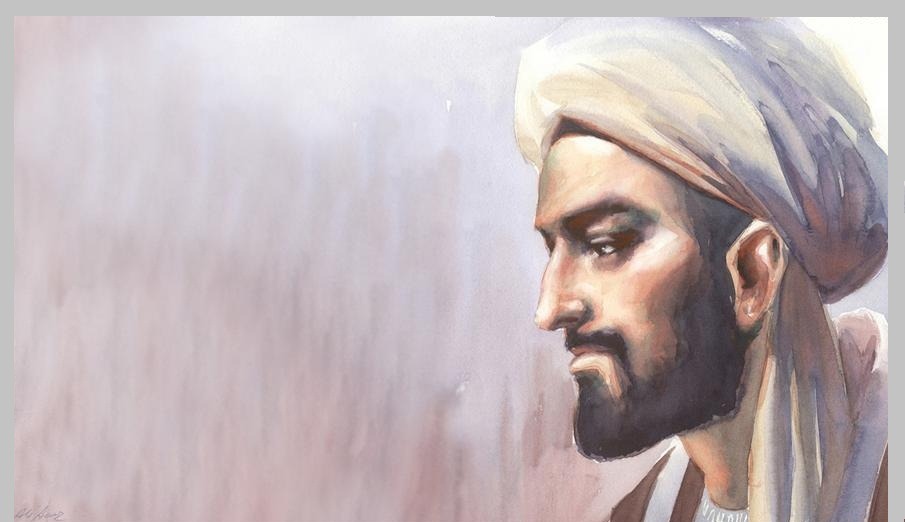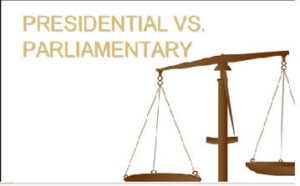Ibn Khaldun:
Ibn Khaldun (May 27, 1332 – March 17, 1406) was a remarkable Arab scholar, philosopher, and historian. Widely regarded as one of the greatest social scientists of the Middle Ages, he is often hailed as the father of historiography, sociology, economics, and demography studies. His seminal work, the Muqaddimah or Prolegomena (“Introduction”), completed in just six months according to his autobiography, remains his most renowned contribution. It profoundly influenced historians in both the Ottoman Empire and beyond, including figures like Kâtip Çelebi, Mustafa Naima, and Ahmed Cevdet Pasha, who employed its principles to analyze the trajectory of the Ottoman Empire. Ibn Khaldun’s encounters with Tamerlane, the founder of the Timurid Empire, further underscore his significance on the historical stage. Throughout history, he has been celebrated as one of the foremost Muslim and Arab intellectuals, with his works drawing comparisons to influential European philosophers and economists. Indeed, Ibn Khaldun’s ideas have left an indelible mark on a wide array of disciplines and continue to resonate with thinkers across cultures and generations.
Émile Durkheim
David Émile Durkheim (April 15, 1858 – November 15, 1917), known professionally as Émile Durkheim, was a pioneering French sociologist who laid the foundation for the academic discipline of sociology. Often mentioned alongside Karl Marx and Max Weber as one of the principal architects of modern social science, Durkheim’s work focused on understanding how societies maintain their cohesion and integrity in the face of modernity’s challenges.
Durkheim’s seminal contributions to sociology include his groundbreaking studies on topics such as the division of labor in society, the rules of sociological method, and the analysis of suicide rates among different religious groups. His meticulous use of scientific tools like statistics, surveys, and historical observation helped distinguish sociology from psychology and political philosophy, establishing it as a legitimate scientific discipline.
In addition to his influential writings, Durkheim played a pivotal role in institutionalizing sociology in Europe. He founded the first European department of sociology and became France’s inaugural professor of sociology. Durkheim’s efforts to promote sociology as a legitimate science were guided by his refinement of positivism and his advocacy for epistemological realism. He believed that sociology should focus on studying social institutions and structural social facts, viewing society as a collective entity with its own set of beliefs and behaviors.
Durkheim’s major works, including “The Division of Labour in Society,” “The Rules of Sociological Method,” and “The Elementary Forms of the Religious Life,” continue to shape sociological inquiry today. He was a staunch proponent of structural functionalism, emphasizing the holistic study of societal phenomena rather than individual actions.
Throughout his career, Durkheim remained a prominent figure in French intellectual circles, lecturing extensively and publishing works on various topics such as the sociology of knowledge, morality, religion, law, and education. Many of the terms he coined, such as “collective consciousness,” have become commonplace in both academic and everyday discourse, solidifying his enduring legacy as a towering figure in the field of sociology.
Points of Similarities
- Khaldun compared societies to individuals when he asserted that “dynasties have a natural life span like individuals” Like Khaldun, Durkheim applied biological metaphors and analogies to describe social changes.
- Both scholars conceptualized society as a social organism that evolves or develops from being simple and mechanical to complex and organic.
- Khaldun noted that “human beings cannot live and exist except through social organization and cooperation”. This concept was similar to Durkheim’s notion that “society cannot exist if its parts are not solitary”.
- Khaldun discussed the well-developed division of labor in urban areas and proposed that division of labor occurred as a result of a transition in lifestyles from rural to urban society. This idea was quite similar to Durkheim’s for the rise of the division of labor, caused by a transition from mechanical solidarity to organic solidarity.
- Khaldun closely examined how economic factors affect society. However, he did not ignore non-economic factors like asabiyyah (social solidarity) and religion. Khaldun, like Durkheim, treated religion as a culturally determined social fact; that is, civilizations can continue without “religious laws.” Khaldun preceded Durkheim with regard to emphasizing the positive role of religion in social control and group harmony. Religion fortifies social solidarity, an idea Durkheim highlighted some 500 years after Khaldun.
- In Khaldun’s perspective, religion is the most significant player to solidify society, followed by kinship. Khaldun’s association of religion with primitive society presented the same idea as the function of religion in Durkheim’s mechanical solidarity which minimized individual differences signifying that “ideas and tendencies common to all the members of the society are greater in number and intensity than those which pertain personally to each member”.
- Like Khaldun, Durkheim noted that “higher societies can maintain themselves in equilibrium only if labor is divided.
Points of Differences
Khaldun stated that rural societies can possess only mechanical solidarity, whereas more complex urban societies, characterized by greater division of labor, possess the potential to show signs of organic solidarity. However, Durkheim drew a direct comparison between mechanical and organic solidarity, indicating that the former has more primitive and inferior attributes of societal unity than the latter. That is, Durkheim saw mechanical solidarity as a substandard form of social cohesion, as opposed to organic solidarity.
Durkheim’s conception of social solidarity was developed by contrasting mechanical and organic solidarity, whereas Khaldun only identified mechanical solidarity. Khaldun was aware of ‘organic’ civilization, and he held it to be the necessary and essential requirement of civilization.
From Khaldun’s perspective, tribes were knit from within. While Khaldun perceived complex societies as undermined by their lack of common will, Durkheim perceived complex societies as fortified by their domestic interdependence.
The collapse of collective consciousness generated a greater role for the institution of the State, whereas the breakdown of asabiyah (social solidarity) for Ibn Khaldun initiated the disintegration of the State. Therefore, the loss of social solidarity in both cases created two different forms of social change.
In Khaldun’s theory, the nomadic lives and sedentary lives of cities were contrasted; through this comparison, the concept of social solidarity –esprit de corps- was developed. The nomadic lifestyle encompassed an explicitly strong social cohesion that decreased in intensity as the society urbanized.
Khaldun divided primitive “societal structure” into the following: (1) agricultural societies, “those who make their living through the cultivation of grain and through agriculture,” (2) pastoral societies, “those who make their living from animals such as sheep and cattle, requiring pasturage,” and (3) camel desert societies, “those who make their living by raising camels”
In rural society, these three primitive social structures were the result of blood ties, alliance, and clientship. Khaldun believed the first type, blood ties, embodied the most influential of the social structures and consisted of the strongest feelings of social solidarity: It took precedence over relationships from other ties. The meaning of clientship represented loyalty to religion or religious affiliation. In Khaldun’s perspective, religion was
capable of generating prominent feelings of social solidarity.
The initial issue to be discussed is Durkheim’s evolutionary perspective on social change, which he conceptualized as changing in a linear form from one stage to another. As the division of labor increases in a society, members of society begin to perform more specialized tasks in professions. This indicated that society evolved from being simple or “mechanical” to more complex or “organic” in nature.
Societal development towards modernization and industrialization was directed from a mechanical to an organic state. These changes could be observed through enlarged population density, increased communication between mechanical societies, specialization, and a division of labor. Moreover, Durkheim argued that social change is intrinsic to society; it was inherent in the nature of society. The main reason behind this change is the division of labor that stimulated the transition from
mechanical solidarity to organic solidarity.
What is Asabiya
Asabiyyah or Asabiya, also known as “group feeling” or “social cohesion,” is a concept deeply rooted in the notion of solidarity and unity within a society. Originating in the context of tribalism and clanism, ‘asabiyyah emphasizes the importance of shared purpose and collective consciousness among members of a group.
Contrary to popular belief, ‘asabiyyah is not solely based on nomadic lifestyles or blood relations. Instead, it embodies principles akin to classical republicanism, emphasizing the collective welfare and unity of the community.
In contemporary times, ‘asabiyyah is often equated with solidarity, although it can carry negative connotations, particularly when associated with nationalism or blind partisanship. This suggests loyalty to one’s group regardless of external circumstances or moral considerations.
The concept of ‘asabiyyah gained prominence through Ibn Khaldun’s seminal work, the Muqaddimah. In his writings, Ibn Khaldun portrays ‘asabiyyah as the fundamental bond of human society and a driving force in historical development. He argued that ‘asabiyyah follows a cyclical pattern, waxing strongest at the inception of a civilization, diminishing as it progresses, and eventually giving way to a new, more potent form of social cohesion that lays the foundation for a different civilization. Thus, ‘asabiyyah plays a pivotal role in the rise and fall of civilizations, shaping their trajectory over time.
Ibn-e-Khaldun Concept of Asabiya
Ibn Khaldun’s concept of ‘asabiyyah elucidates the bond of cohesion inherent within human communities, regardless of their level of civilization, spanning from nomadic societies to established states and empires. Notably, ‘asabiyyah reaches its zenith during the nomadic phase and gradually wanes as civilization progresses. As this decline occurs, Ibn Khaldun posits that another, more compelling form of ‘asabiyyah may emerge, leading to the rise and fall of civilizations, a cyclical pattern that permeates history.
Central to Ibn Khaldun’s thesis is the idea that every dynasty or civilization contains the seeds of its own demise. He illustrates how ruling houses often originate on the peripheries of existing empires, harnessing the potent ‘asabiyyah prevalent in their regions to challenge established leadership. Initially perceived as “barbarians” in comparison to their predecessors, these new rulers ascend to power by exploiting the strength of their ‘asabiyyah. However, as they consolidate their control at the empire’s center, they gradually succumb to complacency, losing the discipline and vigilance that characterized their ascent. Consequently, their ‘asabiyyah diminishes, giving way to factionalism and individualism, thus weakening their political cohesion.
According to Ibn Khaldun, this internal decay sets the stage for the emergence of a new dynasty at the empire’s periphery, initiating a cycle of rise and fall. He astutely observes that dynasties, like individuals, have a natural lifespan, typically lasting no more than three generations, or approximately 40 years each. This cyclical nature of dynastic longevity underscores the inevitability of change and succession in human societies, as exemplified by the perpetual ebb and flow of ‘asabiyyah throughout history.
Durkheim’s Views that are Divergent from Khaldun
Durkheim explained the role of the division of labor in society. He stated that the division of labor accelerates both the productive capacity and skill of workmen. Consequently, this increase in both economic and material productivity provides the necessary catalyst for intellectual societal development. However, the division of labor also entails a moral facet that is more important: it creates a feeling of solidarity between people.
Durkheim used the example of a married couple to explain how the division of labor contributes to feelings of solidarity. That is, people working together towards a common goal, albeit performing different tasks, have “fellow feeling” or group cohesion. He asserted that the division of labor went beyond purely economic interests; it constituted the establishment of social and moral order “sui generis.”
Durkheim held that the most visible symbol of social solidarity was law. Durkheim understood the law as the form most representative of these types of organization, mechanical and organic societies. The first type was the “repressive” or punishing law, which delegated some form of punishment upon the offender. The second type was “restitutive,” which did not necessarily imply suffering on the part of the victim but consisted of restoring the previous relationships that had been disturbed from their normal form.
Durkheim claimed that repressive law created a society characterized by mechanical solidarity and that
penal rules expressed the basic conditions for repressive law. Penal law demonstrated the strength of collective reaction to a given action in a mechanical society. Durkheim defined an act as a criminal when it offended the collective conscience. He stated, “It is actually public opinion and opposition which constitutes the crime”.
Durkheim claimed that, unlike repressive law, restitutory law focuses on restoring society. Moreover, restitutory law worked through more specialized bodies such as courts, magistrates, and lawyers, while repressive law tended to remain diffused throughout society.
Durkheim asserted that there are two types of solidarity. The first, mechanical solidarity, established a bond between the individual and society because of the similarities everyone shares. The second, organic solidarity generated social cohesion because a type of cooperation existed between the various “parts” or functions of society. These relationships were partly organized by a division of labor. Each individual must have had a function and a unique set of relationships with other members. Individuality grew at the same time as the parts of society intensified in complexity. Society became more effective at managing its various functions as the elements increased their specific duties.
Durkheim described a simple society as one where its members had quite similar attitudes, beliefs, and material living conditions. Yet, he recognized that mechanical societies could be placed on a continuum: some were more complex than others. In this discussion, he mentioned the “horde,” a social arrangement in which all its members live exactly the same ideal and material lives. Durkheim contrasted the horde with the clan, which is a more developed social group, which is established by several hordes coming together.
To conceptualize the term “religion,” Durkheim separated the concepts of “rites” and “beliefs.” Since rites involved actions motivated by beliefs, first he defined “beliefs.” Durkheim held that all religious beliefs shared one common characteristic: “they presuppose a classification of all the things real and ideal, of which men think, into two classes or opposed groups, … [the] profane and sacred.” He defined religion as “a unified system of beliefs and
practices relative to sacred things, beliefs, and practices which unite into one single moral community called a church, all those who adhere to them”.
Durkheim asserted that the collapse of social solidarity led to abnormal behavior, a phenomenon he called anomie. While Khaldun did recognize how the breakdown of social solidarity resulted in pathological behavior during his time, his conceptualization of anomie was less systematic than that of Durkheim.
Khaldun understood the causes of the breakdown of social solidarity leading to anomie in this fashion: By its nature, the kingdom demands peace. When people grow used to being at peace and at ease, such ways, like any habit, become part of their nature and character.
The new generations grow up in comfort, in a life of tranquility and ease. The old savagery is transformed. The ways of the desert which made them rulers, their violent… In the Khaldunian view, the loosened dynamics of the rural society after the transition to the urban is encompassed in the last phase of the dynastic stages and the development of civilizations. Khaldun’s view discussed in the quotation above on behavior attributed to the consequences of the collapse of social solidarity describes moribund and inert societies. A combination of these aforementioned physiological and psychological factors such as anomie is associated with suicide in Durkheim’s work.
In Suicide, Durkheim explained the social causes of suicide. He proposed three different types of suicide, based on the degrees of imbalance between moral regulation and social integration. He introduced two important “extra social” causes that have a direct effect on suicide rates: the “organic-psychic dispositions and the nature of physical environment”. He compared two different perspectives on suicide. The first perspective proposed that
suicide is mental alienation and a kind of insanity or disease of the mind. The second perspective claimed that mental illness cannot explain suicide.
Although suicide may be influenced by mental disorders, it cannot be generalized to all cases. Durkheim combined these two perspectives. He stated that in spite of existing psychological causes, all people who commit suicide are not insane. However, “suicide may occur in a state of insanity”.
He classified four types of insane suicides. The first type is maniacal suicide: “This is due to hallucinations or delirious conceptions”. The motives for this type of suicide are not rational. The second type of insane suicide is melancholy suicide. This “type is connected with a general state of extreme depression and sadness”. Chronic hopelessness and desperation are the most prominent characteristics of this type.
The third type is obsessive suicide; for this type “suicide is caused by no motive, real or imaginary” but there is a solid fixed idea of death. Although there is not a clear reason, the patient possesses a desire to kill himself. The final type is impulsive or automatic suicide. This type is similar to the previous type in that there is not any real or unreal motivation. It is an unpredictable and automatic process; even the person who tried to commit suicide cannot explain or even remember the cause.
Read Also: Ibn-e-Khaldun’s Concept of Solidarity (Asabiyyah)
📍 English Language Educator | Blogger & Content Strategist | 7+ Years in Educational Blogging
Nosheen Bashir is a dedicated English teacher and experienced blogger with over seven years of expertise in content creation and educational writing. Passionate about language, literature, and effective communication, she combines her teaching experience with blogging skills to create insightful, research-backed content that helps learners and educators alike.
🔹 Expertise & Achievements:
✔ English Language Education: A skilled educator with years of experience in teaching English grammar, literature, and communication skills to students of varying levels.
✔ Educational Blogging: Running a successful blog for 7+ years, delivering well-structured, engaging content on language learning, writing techniques, and academic success.
✔ SEO & Content Strategy: Specializes in creating high-ranking, authoritative articles that follow Google’s EEAT principles, ensuring content that is both informative and search-friendly.
✔ Student-Centric Approach: Committed to making English easier, engaging, and accessible, helping readers and students improve their language proficiency.
🚀 With a passion for teaching and writing, Nosheen Bashir is dedicated to crafting educational content that empowers students, teachers, and language enthusiasts worldwide.










